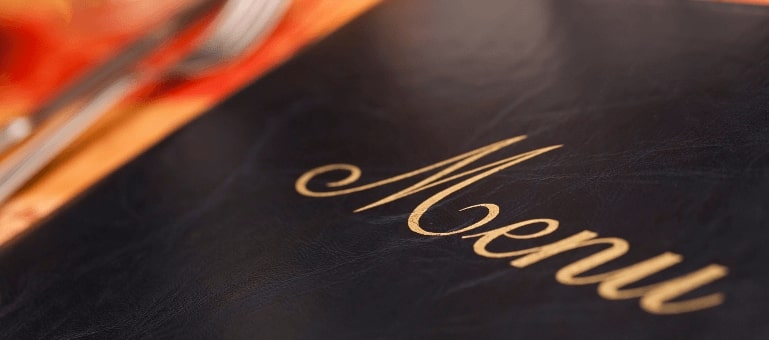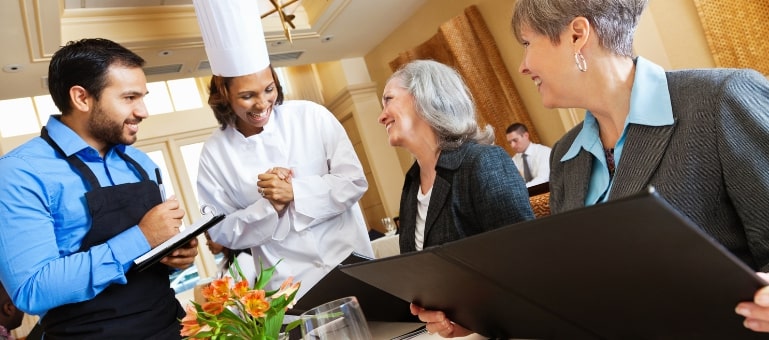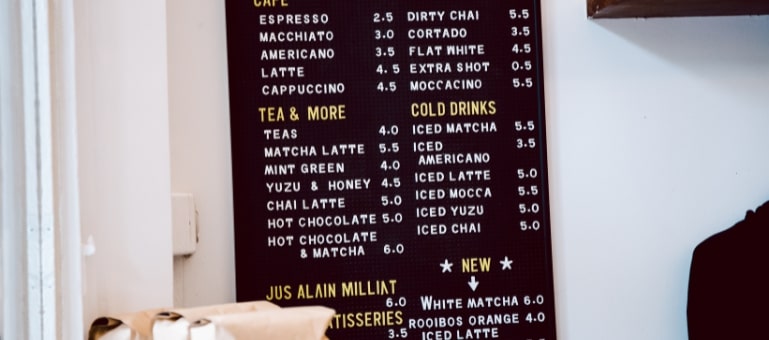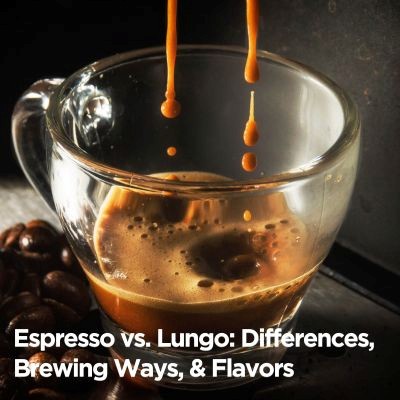Menu psychology is a tactic restaurants and food establishments use to influence customer choices and behavior through clever menu design and psychology-based techniques.
Think of it as a carefully crafted menu magic, where every element, from the layout to the descriptions, is thoughtfully designed to guide your dining decisions. It’s like a menu with hidden powers, shaping your experience and steering you towards certain dishes.
Menu psychology is not just about making the menu look pretty; it’s a powerful tool that taps into the science of consumer behavior. It’s like understanding what makes our minds tick when we see certain words or visuals and using that knowledge to create an enticing dining experience.
From the strategic placement of high-profit items to the use of descriptive language that makes your mouth water, every detail is part of a grand plan to make you choose certain dishes over others.
The Science of Menu Design

Let’s delve into the fascinating world of menu design and explore the scientific aspects that influence our dining experience and choices. Menu design involves a thoughtful combination of various elements, such as layout, typography, color psychology, and the use of images, each playing a significant role in how we perceive the menu and make our ordering decisions.
The layout of a menu is strategically organized to guide our eyes through the offerings. By placing certain items in prominent positions, restaurants can draw our attention and influence our preferences. Typography also contributes to the overall feel of the menu, with different fonts and sizes evoking specific associations and emotions.
Color psychology plays an essential role in setting the mood of the dining experience. The colors used in the menu can evoke feelings and affect our appetite. Warm tones like red and orange may stimulate hunger, while cooler colors like blue and green can create a more relaxed atmosphere.
Images are powerful tools in menu design. High-quality pictures of delicious dishes can trigger cravings and entice us to try something new. They add a visual appeal and help us envision the flavors before we even place an order.
Combining these visual elements with menu arrangement and aesthetics creates a cohesive and appealing menu. The science of menu design is a careful blend of art and psychology, aimed at enhancing our dining experience and guiding our choices.
Influencing Customer Choices

One of the key tactics in menu psychology is the strategic placement of high-profit items. By positioning these dishes in eye-catching locations or using visual cues, restaurants draw attention to these choices, increasing the likelihood that diners will opt for them. It’s like a gentle nudge towards the restaurant’s most profitable offerings.
Suggestive language is another powerful tool used to influence customer choices. The way dishes are described can evoke emotions and cravings, enticing diners to explore certain items. For example, using words like “succulent,” “savory,” or “indulgent” can make dishes appear more tempting and appealing.
Visual cues play a significant role in menu psychology. Whether it’s through the use of mouthwatering food images or subtle design elements, visual cues create a memorable and persuasive menu. These cues not only make the menu visually appealing but also prompt diners to lean towards specific selections.
Additionally, menu psychology techniques involve creating a hierarchy of choices through menu placement. By strategically organizing the items, restaurants can emphasize certain dishes and make them more prominent. This arrangement influences how diners scan the menu and directs their attention to specific options.
Pricing and Perception

One popular pricing tactic is “charm pricing,” where prices are set just below a whole number, such as $9.99 instead of $10. This subtle difference can create the perception of a lower cost and entice customers to feel like they are getting a better deal.
Another powerful concept is the “decoy effect,” where a strategically placed third option influences how customers choose between two other options. By introducing a decoy that is less appealing but priced similarly to a preferred option, the preferred choice becomes more attractive in comparison.
“Anchoring” is yet another tactic that plays with our perception of value. When a high-priced item is placed at the top of the menu, it becomes the anchor that sets the context for the rest of the prices. As a result, other items may seem more reasonably priced in comparison.
These pricing strategies are part of psychological pricing, which aims to influence customers on a subconscious level. By understanding how diners perceive value, restaurants can strategically structure their menu prices to encourage specific choices.
Adapting to Consumer Behavior
Consumer behavior is at the heart of menu evolution. Restaurants carefully observe how customers interact with their menus, analyzing which items are popular and which ones may need improvement. By understanding customer preferences, they can craft consumer-centric menus that resonate with diners.
Customer feedback plays a crucial role in shaping menu updates. Restaurants listen attentively to what their patrons have to say, taking note of their likes, dislikes, and suggestions. This valuable input guides them in making necessary changes to the menu, ensuring it aligns with the desires of their loyal customers.
As food trends and preferences change, restaurants must adapt quickly to stay relevant. Whether it’s incorporating new ingredients, offering healthier options, or catering to dietary restrictions, menu updates reflect the evolving tastes of the customer base.
Menu psychology is not static; it’s an ever-evolving art that thrives on customer satisfaction. By continuously adapting and improving their menu offerings, restaurants can create a dining experience that exceeds expectations.
Concluding Thoughts
The significance of menu psychology lies in its ability to influence customer choices and behavior. By strategically arranging menu items, using suggestive language, and incorporating visual cues, restaurants can guide diners towards specific selections, ultimately enhancing their dining experience.















